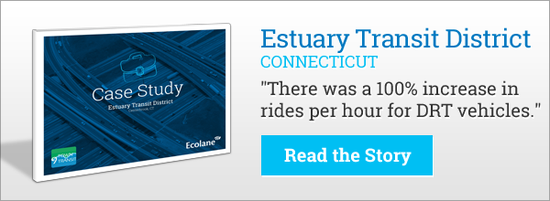Modern transit riders are much more diverse than they once were in the past, and today more and more people are intentionally choosing to take public transit instead of using personal vehicles. Because riders are coming from such varied demographics, they have different expectations and needs from a transit system. But thanks to modern transportation software that is flexible and customizable, agencies are able to cater to the needs of all riders, regardless of age, income, special needs, or other factors.
Who Is the Modern Transit Rider?
Today, transit users aren’t just people who find personal vehicles too expensive or who don’t have any other means of transportation. An increasing number of riders are weighing their options and opting to take transit even when they have alternative methods of getting around. More and more riders are made up of:
- Students
- Millennials
- Baby Boomers
- Working professionals
- Parents with young children
Moreover, this means that people are also taking transit for many different reasons. These include commuting to and from work or school, attending social engagements, shopping, going to and from the gym, the library, the grocery store, appointments, and traveling long distances between cities for various reasons.
What Are the Needs of Modern Transit Riders?
Transit riders have different priorities depending on their demographics and depending on their reasons for using transit, so knowing your riders can give you a better understanding of their needs. Some of the fundamental concerns for most riders include:
Safety: This is more of a priority for Baby Boomers and parents, but most transit riders are at least mildly concerned about safety. Transportation software can help you improve safety standards, address complaints and issues in a timely manner, and help you address any issues more efficiently. By improving your data collection, increasing the possibilities for real-time communication between drivers and dispatchers, and improving reporting capabilities (including maintenance reports), safety concerns can be addressed and properly handled.
Efficiency and reliability: The riders most concerned with efficiency and reliability are the ones who travel on deadlines, such as students, professionals, and others who are commuting from work, school, and appointments. With the right transportation software, you can address efficiency and reliability issues by:
- Improving your dispatch and communications systems
- Optimizing schedules and creating faster routes
- Increasing the number of rides per hour
- Helping drivers and dispatchers respond to sudden changes
- Allowing drivers and dispatchers to be automatically rerouted on the fly
Online accessibility: It tends to be the younger generation of transit riders who care about this the most, but many modern riders want instant access to updated schedules, fares, delays, and changes. With improved reporting capabilities and the ability to change routes to accommodate unexpected issues, the right transportation software can make this a reality.
Affordability: Everyone today cares about the cost of goods, and that includes the fare for a transit ride. The right software can give you more control, help you improve your systems, and allow you to maximize efficiency on many levels, letting you stabilize operations, reduce costs, and keep your prices competitive.
With modern transit riders becoming more diverse in background and looking toward public transit for different reasons, it’s imperative that transit agencies understand who their riders are and how they can address their needs. Transportation scheduling software is as diverse as your riders, and can provide you with more efficient systems, better schedules, optimized routes, and cost savings that will address your riders’ varied needs.
About the Author

Ecolane
Read Ecolane's blog articles for perspective, opinion and information on transit and paratransit issues.
%20(200%20x%20100%20px).png)

